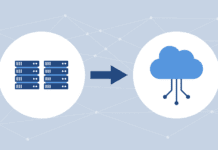Tape storage has been meeting data backup and disaster recovery needs for decades, but as cheap, high-density disk has become an option, tape technology has been moving into the background in a long-term archiving role.
While data tape technology has improved over time, becoming more reliable and easier to manage, the combination of disk storage and deduplication are becoming a more logical investment for enterprise storage architectures.
“The rate of decline in the tape storage market isn’t catastrophic, but for what has been a year after year multibillion dollar business, we’re seeing it decline every quarter for the last four to six quarters,” said Arun Taneja, founder and consulting analyst at Taneja Group.
Even tape backup vendors like Quantum (NYSE: QTM) have embraced disk.
“We don’t see it as a disk versus tape argument,” said Jeff Rector, marketing director at Quantum. “As a vendor, our goal is to provide customers with storage solutions for optimal performance, data protection and ROI.”
Noting that the role of tape is changing, Rector points out that it’s still essential. “The value of tape is that it’s a portable and secure media for disaster recovery usage,” he said.
When it comes to off-site data storage costs, tape is still far less expensive than disk to store a petabyte of data for five years, and what company isn’t looking for the best data protection solution and good ROI?
Tape, Disk and Dedupe
Hay House, a fast-growing publisher of self-help and transformational books, CDs and DVDs founded in 1984, was in serious need of revisiting its backup processes.
“Four years ago, we got into the multimedia arena, including six hours a day of radio programming, and we’re getting into video,” said Mike Fishell, director of IT at Hay House. “We need to store shows for replay.”
Noting that a lot of the company’s material was not replaceable, its backup solution, a single drive tape loader with 15 slots, wasn’t up to the task. The company was using too much tape, seven tapes weekly, or about 6 terabytes, it was getting increasingly difficult to manage, and backups were taking all night.
In short, it was time to find a new solution that was more cost-effective, more reliable and efficient, and easier to manage. “We also needed a backup solution that was able to accommodate our growth,” said Fishell.
After looking at solutions from several vendors, the publisher chose the Quantum DXi5500 disk appliance with deduplication, Quantum Scalar 50 tape library and Symantec (NASDAQ: SYMC) Backup Exec software.
The results were impressive.
“We saved time and money,” said Fishell. “Our processes are more automated and we don’t have to change out tapes a couple of times a week.”
More specifically, disk-based deduplication provides Hay House the data protection and redundancy it needs, as well as immediate availability.
Backup processes have been streamlined, with deduplication reducing volumes by 92 percent. Weekly tape usage has decreased by 50 to 75 percent and restore times have been reduced from hours or days to minutes.
There’s definitely still a place for tape at Hay House, “It’s off-site. We keep a full set,” said Fishell.
Dedupe Drops Disk Storage Costs
The benefits of deduplication for backup are well documented, reducing disk and network bandwidth requirements by 90 percent or more.
Quantum’s Rector said that with the majority of restores taking place in the first 50 days of backup, restores from disk backup meet users’ needs most efficiently.
Taneja said the uptake of disk for secondary storage management backup and archiving — is huge. “It’s breaking all barriers. Disk has tremendous benefits for backup at incremental cost,” he said.
With deduplication enabling a 20:1 reduction in data, it’s so effective that the cost of disk comes within an arm’s length of tape, he added.
With organizations relying on tape storage for so many years, however, it’s something that many organizations have yet to let go of, hence the popularity of virtual tape libraries (VTL) that can be dropped into current backup infrastructures. Still, over the last 18 months, there’s been a noticeable shift taking place, with the comfort level of disk and deduplication for backup steadily growing, said Taneja.
“Vendors now go back to their customers selling disk-to-disk replication to a disaster recovery site,” replacing tape at remote sites completely, said Taneja.
Follow Enterprise Storage Forum on Twitter





